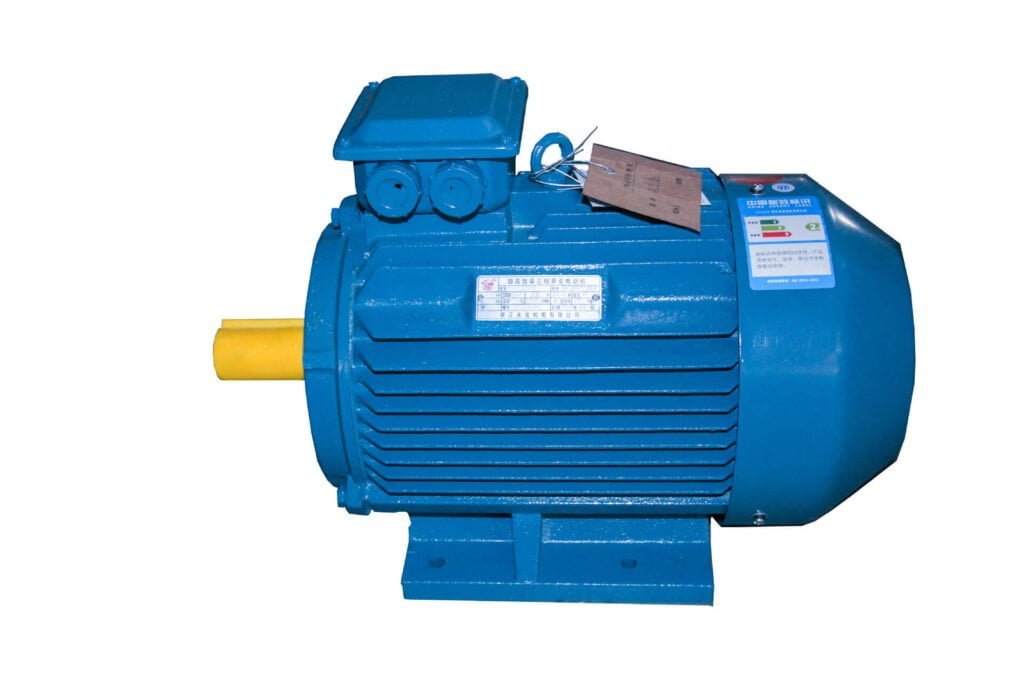Of u nu kiest voor een ultra-efficiënte asynchrone motor
Met de looptijd van het markteconomisch systeem in verschillende landen, De meeste ondernemingen worden geconfronteerd met toenemende concurrentie op de geglobaliseerde markt. Van de verschillende industriële kosten, Elektriciteitskosten zijn de derde of vierde grootste kosten geworden na materiaalkosten en arbeidskosten. Vooral in sommige energieke ondernemingen, De kosten van elektriciteit zijn de belangrijkste kosten geworden. Motor energieverbruik is ongeveer goed 60%-70% van industrieel energieverbruik. Ondernemingen hebben een groot potentieel en vraag naar energiebesparing, En het is noodzakelijk om de productiekosten te verlagen door energiebesparing en consumptievermindering.

Of u zeer efficiëntie of ultra-efficiënte asynchrone motoren moet vervangen, U kunt de volgende aspecten overwegen:
1. Gedurende de gehele bedrijfscyclus, De initiële aankoopkosten van de motor zijn lager dan de bedrijfskosten. De bedrijfskosten van de motor zijn in het algemeen goed voor meer dan 90% van de totale kosten.
Een motor met een hogere efficiëntie is ook duurder omdat deze een hogere productkwaliteit heeft en meer materialen gebruikt, en de toegevoegde kosten zijn afhankelijk van het type en de kracht van de motor. Het kostenverschil tussen IE1 en IE2 is 10% naar 15%, en de kosten tussen IE2 en IE3 zullen met een ander stijgen 10% naar 15%. Bij het vergelijken van de efficiëntie van elektrische motoren, De efficiëntie mag niet alleen worden vergeleken, Maar de vermogensfactor moet ook in aanmerking worden genomen.
2. Eerste aankoopkosten. De eerste aankoopkosten houden rekening met het ontwerp, Installatie- en aankoopprijs van de elektromotor en extra apparatuur zoals variabele snelheidsaandrijvingen.
3. Bedrijfskosten. Bedrijfskosten bestaan uit elektriciteitsrekeningen, onderhouds- en reparatiekosten. Elektriciteitsverbruik wordt berekend volgens de volgende drie delen:
1) Gemiddeld jaarlijkse laadsnelheid;
2) De motorefficiëntie die overeenkomt met de gemiddelde belastingssnelheid;

Voor motoren met een vaste snelheid, Deze onderdelen kunnen redelijk nauwkeurig worden geschat. Voor toepassingen met motoren met verschillende belastingen en mogelijke variabele snelheidsaandrijvingen, De berekening van de gemiddelde belastingsfactor, De bijbehorende bedrijfstijd en de efficiëntie van de motor plus de variabele snelheidsaandrijving moeten zijn gebaseerd op een typisch laadprofiel. Bij afwezigheid van een laadprofiel gerelateerd aan een bestaand systeem, Een verondersteld gemiddeld laadprofiel kan worden gebruikt.
De kosten van het gebruik van elektriciteit bestaan in het algemeen uit de prijs van de verbruikte elektriciteit (Overweeg dag/nacht, Seizoen en andere tarieven), de kosten voor het betalen van de piekbelasting (kW) en de kosten van vermogensfactorcompensatie (KVA). Regionale verschillen in de bovengenoemde elementen en structuren van elektriciteitskosten, Evenals discontering, Belastingen en toekomstige prijsstijgingen ten opzichte van de voorspelbare technische levenscyclus van de motor (hoe lang de motor kan worden uitgevoerd, inclusief reparaties) moet rekening worden gehouden.
4. Retourtijd. De eenvoudige terugverdieningsmethode is gebaseerd op de verlaagde jaarlijkse bedrijfskosten die verband houden met de extra investeringen in elektriciteit van hogere efficiëntie (en mogelijk variabele snelheidsaandrijvingen en andere verbeteringen). De gebruiker moet de drie elementen van de aankoopprijs begrijpen, Jaarlijkse bedrijfstijd en elektrische energiekosten voor elektrische motoren en variabele snelheidsaandrijvingen van verschillende efficiëntieklassen.
Gebruikers kunnen de loopkosten berekenen en de terugverdelingstijd van verschillende aanbevolen itemmonsters vergelijken, en kies de oplossing volgens de kortste terugverdientijd.
5. Levenscycluskosten. In een levenscycluskostenanalyse, De kostenaannames van alle elementen in drie dimensies voor verschillende projectmonsters worden vergeleken met de volgende benchmarks:
1) Eerste aankoopkosten, Planningskosten en installatiekosten;
2) bedrijfskosten (elektriciteit, Onderhoud en reparaties);
3) De kosten van ontmanteling en hergebruik na het einde van de levensduur.
Om correct te berekenen, Een analyse van een kortingsproces moet rekening houden met factoren zoals rentetarieven en prijsstijgingen. Gebruikers moeten de aankoopprijs kennen, Jaarlijkse operationele uren, Kosten van elektriciteit, Verwachte levenstijd, en gemiddelde onderhoudskosten en reparatie voor elektrische motoren en variabele snelheidsaandrijvingen van verschillende efficiëntieklassen.




